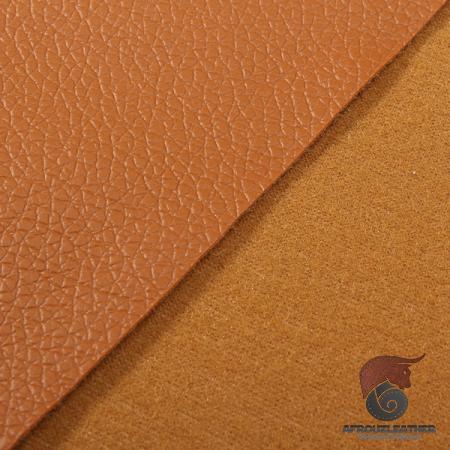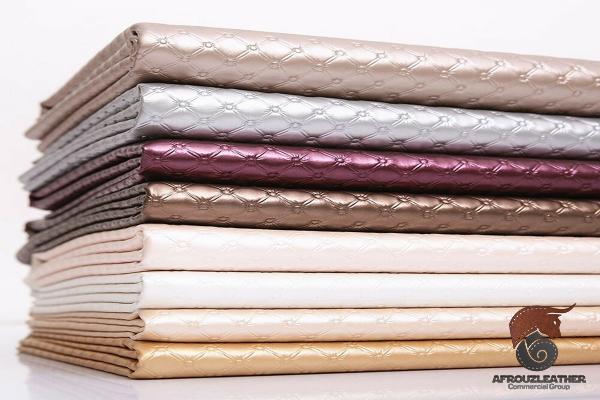Ostrich leather, known for its distinctive texture and durability, is becoming increasingly popular in the luxury goods industry. The process of tanning ostrich hides into a fine leather material involves intricate techniques that result in a luxurious final product. This article explores the world of ostrich leather tanneries, shedding light on the production process, market demand, and the unique characteristics that make ostrich leather a premium material. 1. Ostrich Farming and Hide Procurement: Before delving into the tanning process, it is essential to understand the origins of ostrich leather. Ostrich farming involves rearing ostriches primarily for their meat, feathers, and hides. The hides, procured from ostrich slaughterhouses, undergo various preparation stages before reaching the tannery. These stages, including de-fleshing, de-fatting, and curing, ensure that the hides are ready for the tanning process. 2. Tanning Process: The tanning process for ostrich leather involves several elaborate steps to transform the raw hides into a desirable material. Commonly used tanning methods include vegetable tanning, chrome tanning, and combinations thereof. Each method imparts specific characteristics to the leather, such as color, flexibility, and water resistance.
leather
 The tannery carefully selects the appropriate tanning method based on customer requirements and fashion trends. 3. Characteristics of Ostrich Leather: Ostrich leather possesses distinctive characteristics that set it apart from other types of leather. These features contribute to its popularity in the luxury goods market: a) Quill Bumps: The unique texture of ostrich leather comes from the signature quill bumps or follicles on the hide. These bumps create an attractive pattern that enhances the aesthetic appeal of products made from ostrich leather. b) Strength and Durability: Ostrich leather is renowned for its strength and durability. The hide’s natural fibrous structure makes ostrich leather resistant to wear and tear, ensuring products made from it last for an extended period. c) Softness and Flexibility: Despite its robustness, ostrich leather is remarkably soft and flexible. This characteristic allows the leather to conform to various shapes, making it suitable for the production of high-end accessories and footwear. d) Water and Heat Resistance: Ostrich leather exhibits inherent resistance to water and heat damage.
The tannery carefully selects the appropriate tanning method based on customer requirements and fashion trends. 3. Characteristics of Ostrich Leather: Ostrich leather possesses distinctive characteristics that set it apart from other types of leather. These features contribute to its popularity in the luxury goods market: a) Quill Bumps: The unique texture of ostrich leather comes from the signature quill bumps or follicles on the hide. These bumps create an attractive pattern that enhances the aesthetic appeal of products made from ostrich leather. b) Strength and Durability: Ostrich leather is renowned for its strength and durability. The hide’s natural fibrous structure makes ostrich leather resistant to wear and tear, ensuring products made from it last for an extended period. c) Softness and Flexibility: Despite its robustness, ostrich leather is remarkably soft and flexible. This characteristic allows the leather to conform to various shapes, making it suitable for the production of high-end accessories and footwear. d) Water and Heat Resistance: Ostrich leather exhibits inherent resistance to water and heat damage.
Specifications of leather
 The leather’s natural oils make it highly resistant to moisture, ensuring it maintains its excellent condition even in humid environments. 4. Market Demand and Applications: Ostrich leather appeals to a niche market of luxury goods consumers who appreciate fine craftsmanship, unique textures, and exclusivity. The demand for ostrich leather products, including handbags, wallets, footwear, and upholstery, continues to grow globally. Customers value the distinctive qualities of ostrich leather, which is often considered a status symbol due to its rarity and high cost. 5. Sustainability and Ethical Considerations: As with any leather industry, concerns regarding sustainability and ethical practices arise. Responsible ostrich farming and tanning operations prioritize the humane treatment of animals, ensuring their well-being throughout the supply chain. Additionally, various tanneries invest in eco-friendly and sustainable production methods to minimize their environmental impact.
The leather’s natural oils make it highly resistant to moisture, ensuring it maintains its excellent condition even in humid environments. 4. Market Demand and Applications: Ostrich leather appeals to a niche market of luxury goods consumers who appreciate fine craftsmanship, unique textures, and exclusivity. The demand for ostrich leather products, including handbags, wallets, footwear, and upholstery, continues to grow globally. Customers value the distinctive qualities of ostrich leather, which is often considered a status symbol due to its rarity and high cost. 5. Sustainability and Ethical Considerations: As with any leather industry, concerns regarding sustainability and ethical practices arise. Responsible ostrich farming and tanning operations prioritize the humane treatment of animals, ensuring their well-being throughout the supply chain. Additionally, various tanneries invest in eco-friendly and sustainable production methods to minimize their environmental impact.
buy leather
 6. Challenges and Future Outlook: The ostrich leather tanning industry faces several challenges that impact its growth and sustainability. One key challenge is sourcing high-quality ostrich hides due to the limited number of suitable farms worldwide. Maintaining skilled labor and ensuring consistent quality control are also critical concerns. However, advancements in technology and improved farming practices offer promising solutions. Additionally, the growing demand for luxury goods presents significant opportunities for the ostrich leather tanning industry. Conclusion: The art of tanning ostrich leather requires meticulous attention to detail and craftsmanship, resulting in a luxury material highly sought after by fashion-conscious consumers. Ostrich leather’s unique characteristics, including its texture, strength, softness, and water resistance, contribute to its increasing popularity in the luxury goods market. By addressing sustainability concerns and leveraging technological advancements, the ostrich leather tannery industry can continue to thrive and cater to the growing global demand for premium leather products.
6. Challenges and Future Outlook: The ostrich leather tanning industry faces several challenges that impact its growth and sustainability. One key challenge is sourcing high-quality ostrich hides due to the limited number of suitable farms worldwide. Maintaining skilled labor and ensuring consistent quality control are also critical concerns. However, advancements in technology and improved farming practices offer promising solutions. Additionally, the growing demand for luxury goods presents significant opportunities for the ostrich leather tanning industry. Conclusion: The art of tanning ostrich leather requires meticulous attention to detail and craftsmanship, resulting in a luxury material highly sought after by fashion-conscious consumers. Ostrich leather’s unique characteristics, including its texture, strength, softness, and water resistance, contribute to its increasing popularity in the luxury goods market. By addressing sustainability concerns and leveraging technological advancements, the ostrich leather tannery industry can continue to thrive and cater to the growing global demand for premium leather products.

Your comment submitted.